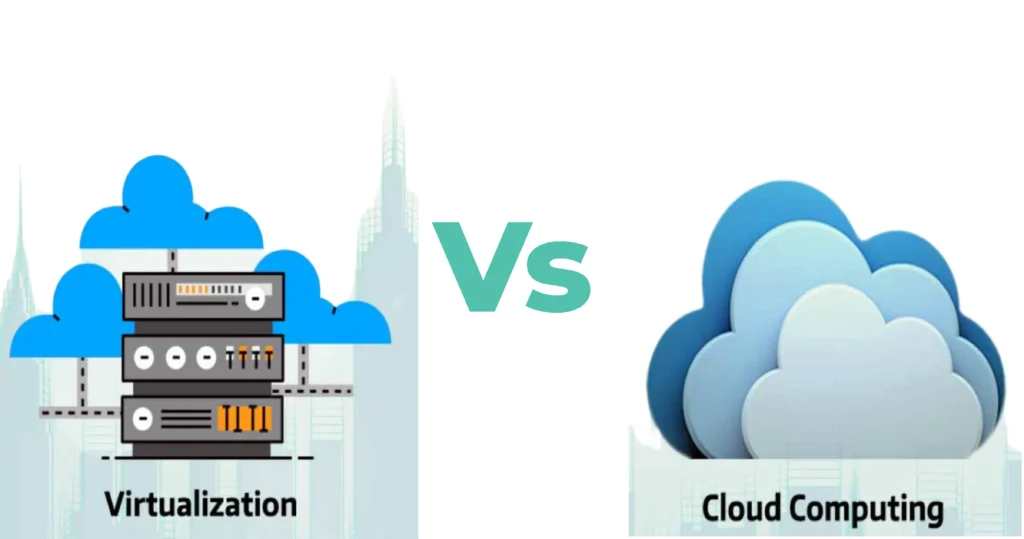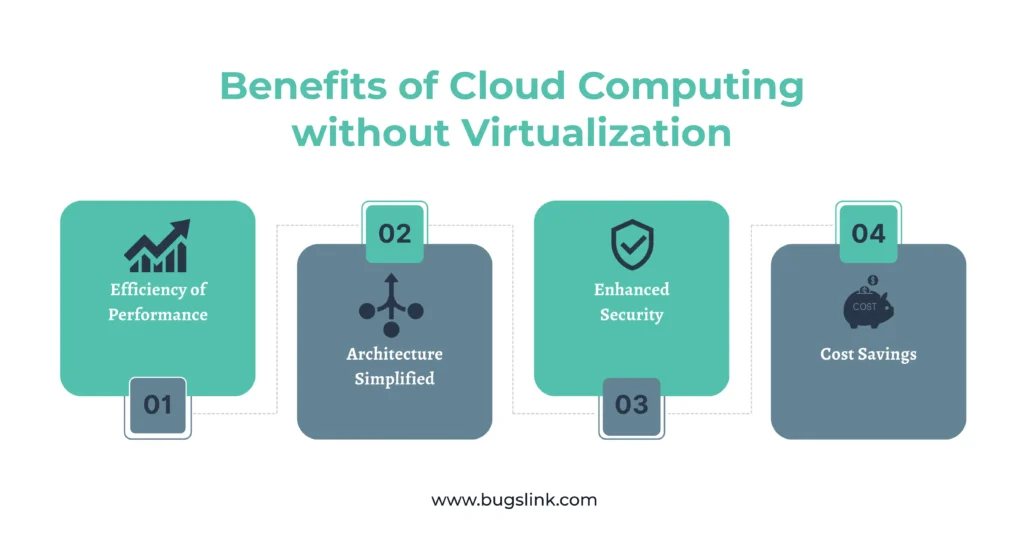Cloud computing has fundamentally changed business operations by providing exceptional scalability, flexibility, and cost-efficiency. A common misunderstanding is that virtualization is a compulsory component of cloud computing. While virtualization often plays a crucial role, cloud computing without virtualization is feasible and valuable in specific systems. This blog explores how cloud computing exists without virtualization.
Is Virtualization and Cloud Computing the same?
It is essential to address a common question: Are virtualization and cloud computing the same thing? Before delving into cloud computing without virtualization, the brief response is that they are not identical; they are related but distinct concepts.
- Cloud computing contains various services, including servers, storage, databases, networking, software, and analytics, accessible via the Internet.
- Virtualization summarizes physical hardware, allowing for the operation of multiple virtual machines (VMs) on a single physical server, optimizing resource utilization.
Can Cloud Computing exist without Virtualization?

While virtualization is frequently used in cloud computing and is commonly associated with cloud technologies, it is not the sole approach to developing cloud architectures. Cloud computing is enabled by alternative technologies and techniques that do not rely on conventional virtualization methods. Some of these are as follows:
- Bare metal cloud providers offer dedicated physical servers to customers without the need for virtualization. Unlike traditional cloud environments, which rely on virtualized instances, bare metal clouds provide:
- Direct access to raw computing resources
- Offering higher performance
- Lower Latency
- Greater control over hardware configurations
- Containerization technology, displayed by platforms like Docker and Kubernetes, delivers a lightweight alternative to traditional virtualization. Containers allow the efficient use of resources and the rapid deployment of applications by possessing application code and reliances in a portable, isolated environment. Although containers can be deployed on virtualized infrastructure, they can also be operated directly on bare metal servers or container-specific cloud environments.
- Serverless computing, also known as Function as a Service (FaaS), abstracts the underlying infrastructure entirely, allowing developers to focus on writing and deploying code without managing servers or virtual machines. Serverless platforms automatically scale resources based on demand, controlling the need for manual provisioning or virtualization.
The Benefits of Cloud Computing Without Virtualization

Efficiency of Performance: Applications can operate directly on tangible hardware without needing a hypervisor, reducing latency and enhancing performance. This direct interaction with hardware is especially advantageous for applications that necessitate real-time processing or high-performance computation tasks.
Architecture Simplified: Cloud computing without virtualization can simplify the structure in situations where virtualization’s complexity is extra, such as small-scale deployments or single-tenant environments. This decrease in complexity may result in more straightforward management, troubleshooting, and cost savings.
Enhanced Security: Removing the virtualization layer decreases the attack surface. There’s no risk of VM escape, where a malicious user could break out of a virtual machine and access the host system. It can enhance security, especially in sensitive or regulated environments.
Cost Savings: Virtualization technology can have substantial operational and licensing expenses for specific organizations. Nevertheless, selecting a non-virtualized approach can circumvent these expenses, rendering it a more cost-effective alternative for particular duties.
Use Cases for Cloud Computing Without Virtualization
1. Dedicated Servers
Organizations that require dedicated resources for their applications without sharing infrastructure with others may opt for a non-virtualized cloud environment. It is common in industries with strict compliance requirements or those dealing with sensitive data.
2. High-Performance Computing (HPC)
Tasks that demand maximum performance, such as scientific simulations, financial modeling, or big data processing, benefit from running directly on physical hardware without the overhead introduced by virtualization.
3. Single-Tenant Applications
Businesses that run applications for a single client (single-tenant) often don’t need the multi-tenant capabilities that virtualization provides. It makes a non-virtualized cloud environment a straightforward and efficient choice.
Potential Downsides
While cloud computing without virtualization has its advantages, it’s not without potential downsides:
1. Limited Flexibility
One key benefit of virtualization is the ability to scale, migrate, and manage workloads easily. Without it, flexibility is reduced, making it more challenging to adapt quickly to changing demands.
2. Resource Utilization
In a non-virtualized environment, there may be a higher chance of underutilizing physical resources since there’s no mechanism to allocate unused capacity to other tasks or users.
3. Vendor Availability
Not all cloud providers offer non-virtualized services, which may limit your options when choosing a cloud provider.
Conclusion
Cloud computing with virtualization represents a more common but viable option for specific use cases where performance, simplicity, security, or cost considerations outweigh the benefits of virtualization. Understanding your organization’s requirements and workload characteristics is essential to determine whether this approach suits you.
As the cloud landscape continues to evolve, so will the methods and technologies we use to harness its power. Businesses can make informed decisions that best align with their goals and objectives by considering all available options, including non-virtualized cloud environments.
FAQS
Cloud computing without virtualization refers to using cloud services that do not rely on virtual machines or a hypervisor. Instead, the applications run directly on physical hardware without creating multiple virtual environments on a single server.
As cloud technology evolves, virtualization will likely play a crucial role in cloud computing. Emerging trends like edge computing and hybrid cloud environments may introduce new forms of virtualization, but the underlying principles of efficient resource management and flexibility will remain critical drivers.
No, virtualization and cloud computing are related but distinct concepts. Virtualization is a technology that creates multiple simulated environments from one physical system, while cloud computing is a service model that delivers IT resources over the Internet. Virtualization can be used in cloud computing, but it is not a requirement.
Follow BugsLink for the latest tech updates.

